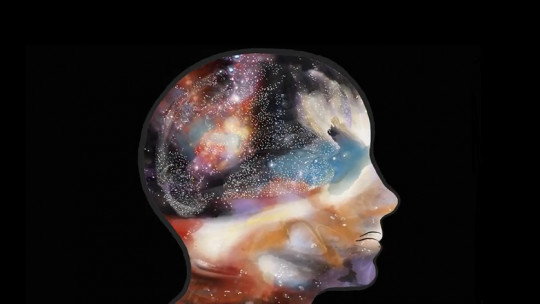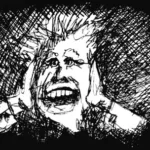
It is common that on some occasions, and especially under high levels of stress, we find ourselves faced with the firm belief that someone is watching us, that someone is following us or that someone is talking about us even if this is not true.
However, when these ideas flood the person’s mind and they are not able to see reality, we can talk about the well-known delusions Throughout this article we will delve into the nature of this experience, as well as its causes, types and differences with other false beliefs.
What are delusions?
Within the field of psychopathology Delirium is understood as a false belief or idea that the patient accepts with total conviction, despite external evidence or evidence demonstrating the opposite. Although it has not yet been possible to generate a fully accepted and satisfactory description of this concept, the previous description would be one of the most approximate.
Despite its pathological characteristics, delirium It is not considered a mental illness or disorder in itself but rather it would be a symptom of a wide variety of psychological conditions such as bipolar disorder, schizophrenia, mania or psychotic depression.
During the course of delirium, the person’s mental state undergoes a large number of changes. These make the patient live feelings of confusion and behavioral changes
Other manifestations or problems typical of delusional states are:
Diagnostic criteria
Although, as specified in the previous point, delusions do not constitute a clinical disorder, but are part of a larger pathological picture. Of course, they must meet a series of special and specific requirements in order to be considered as such.
Some authors and researchers have developed a series of constructs defining delirium. These dimensions or constructs are given in the form of continua that start from what is considered a normal belief, to a pathological one, and they are key to being able to differentiate delusion from other types of beliefs or erroneous ideas. These characteristics are what we will see below.
1. Fixed and unchangeable beliefs or ideas
The delirium must be maintained over time ; It being little or no possibility that this can be modified or corrected regardless of the evidence against it.
2. Intense conviction
A delusion is a firmly held idea. That is to say, the person blindly believes in an idea or specific event.
3. Lack of cultural supports
It is necessary to specify that the idea that the patient maintains cannot be shared by other people or cultural group This means that for the belief to be considered irrational, it cannot be shared or accepted by the rest of the reference society.
4. Excess worry
Unlike other types of false or irrational beliefs, in delusions the person presents great concern or rumination about the delusional idea, which implies significant psychological wear since the patient thinks about it obsessively.
5. Degree of plausibility
This last criterion refers to the degree of probability that the idea may be real. This degree of plausibility can vary from one delusion to another. This means that although in some cases it is easy to detect the impossibility of the delusional idea, in others they may be totally plausible but false
What causes do they have?
Delusions and delusional ideas have as their origin a series of mental and psychological disorders that accompany and shape them. These psychological conditions are:
However, also They can be part of other alterations of organic origin derived from the consumption of drugs and alcohol abuse, as well as detoxification processes and as a secondary reaction to certain drugs.
What types of delusions exist?
Despite the large number of existing delusions, they can be categorized and classified according to their content. Below we will see some of the most frequent and well-known.
1. Paranoid delusion
In the case of paranoid ideas, the person You are convinced that a person or group wants to cause you some type of harm, whether physical, psychological or social. This delusion can take the form of the idea that others want to kill him or that someone is trying to drive him crazy.
2. Delusion of persecution
People who suffer from delusions of persecution firmly affirm that someone is persecuting them, or even that there is a conspiracy against them. This persecution can be either on the street, directly, or in a more veiled way: patients may think that they are entering their house, that they are opening their mail or that they are searching their mobile devices or computers.
3. Delusions of grandeur
The content of this delusion is manifested through an excessive self-valuation of abilities and powers of the patient; which attributes special abilities as well as a great consideration of his own identity.
4. Delusion of reference
As its name indicates, in reference delusion the patient believes that certain events, phrases or statements by other people have to do with him or have a special meaning that has to do with him.
It is common for these patients to think that both the media and other people are sending them all kinds of messages.
5. Somatic delirium
In the latter case, the patient shows the conviction that you are sick or your body is getting sick In the same way, you may perceive a series of false changes or abnormalities in it. These are just a small sample of what is actually a long list of delusions and delusional ideas.
6. Others
Other well-known delusions are:
- Delusion of control.
- Metacognitive delusion.
- Delusion of guilt or sin.
- Jealousy delusion.
- Delusion of false identification.
- Erotomanic delirium.
What is the difference between a delusion and a hallucination?
The fact that on many occasions they occur together and share certain characteristics causes delusions and hallucinations to be frequently confused However, once we know what delusions consist of, it is much easier to differentiate them.
Unlike delusions, hallucinations are an original product of the person’s mind. That is, they really do not exist either in reality or in its external world. Furthermore, just as delusion consists of an idea, hallucinations can be auditory, visual, tactile, or even gustatory experiences. Therefore, the main difference between both concepts is that hallucination is a totally original product invented by the person’s mind, while delirium would be a distortion of an external stimulus
For example, in a delirium the person may perceive a real stimulus such as the radio; However, her mind distorts the message or interprets it as a kind of communication to him. While in hallucination the auditory stimulus would be completely invented by the mind, and could not be perceived by anyone else.
Delusion would consist of an erroneous belief or interpretation of reality based on a real fact, situation or stimulus. However, both concepts have a point in common. In this case it means that the patients are fully convinced of the reality and veracity of their ideas or beliefs.








